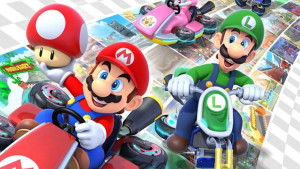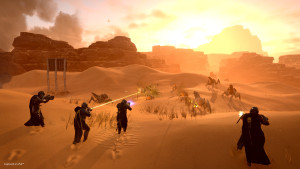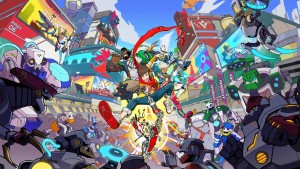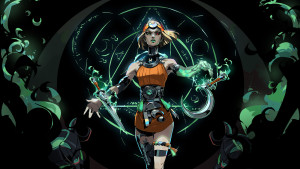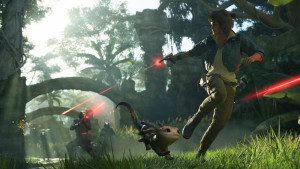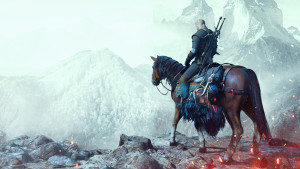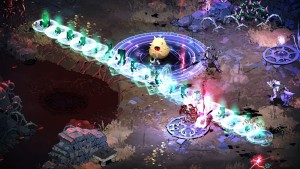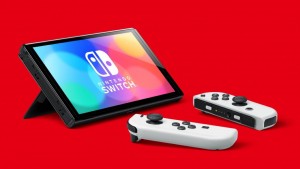Please support Game Informer. Print magazine subscriptions are less than $2 per issue
MLB The Show 16 Review

When you attend a game of baseball in MLB The Show 16, you’re not just going for the peanuts, Cracker Jack, or thrill of seeing a batter demolish a searing 97-mph fastball; you’re going to watch a player disprove Albert Einstein’s Theory of Relativity. Thanks to a new ability called “Showtime,” used exclusively in any player-lock mode like Road to the Show, the fabric of reality can unravel at any given time, gifting your player with the god-like ability to slow time to a crawl. With Showtime active, that 97-mph fastball ends up looking like a lazy balloon floating to the plate.
For a series that I applaud annually for getting baseball’s smallest details right, The Show now appears to have its sights set on mimicking popular video game conventions. Last year, players could wear gear to artificially reward ability bumps. This year, the Showtime mechanic smacks of a mutant gene from a superhero game. While I like the spectacle of Showtime, such as seeing my fielder dive for a ball in super slow motion, it’s more of a misrepresentation of the sport than anything. It feels cheap. Showtime doesn’t guarantee success, but there’s obviously less of a chance of a strike out, error, or poorly struck ball. Although a limited resource, it is cheating in the most video game way possible.
Road to the Show also stumbles mightily with its Showtime-based perk system that guarantees outcomes like flyballs or all pitches being in the strike zone. Couple these additions with the returning trading card system, and suddenly, skill doesn’t matter that much anymore. This year’s takeaway: Build your baseball Iron Man, select his powers, and you’ll make it to the big leagues in no time.
Diamond Dynasty, Sony’s online-focused mode in which you are tasked to create a fictional team and build its roster through collectible player cards, has received a fair number of notable additions this year. This is where I ended up spending most of my time, willingly and having a good time doing so. For first time in Show history, Diamond Dynasty is the mode I recommend players invest their time in. Through the new avenues of play, I was pleased to find I was earning new cards left and right, and I could fly through match-ups almost as quickly as a player-locked game.
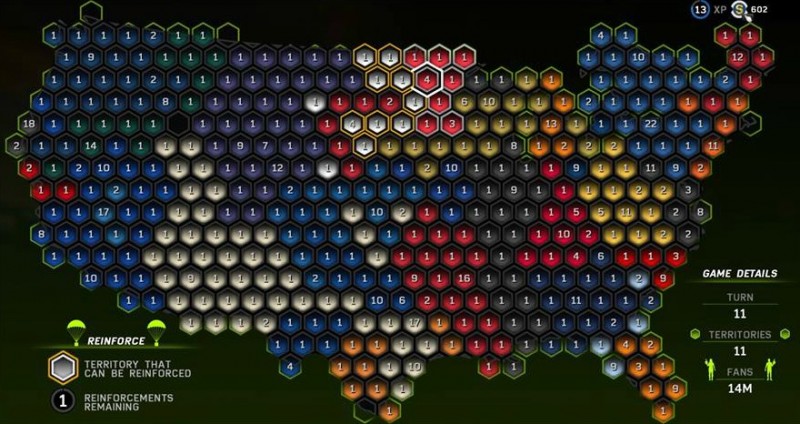
Diamond Dynasty’s biggest hooks come in unconventional baseball ways. The first is Conquest mode, a grid-based battle across the United States in which every MLB baseball team (and your fictional one) vie for territorial control. Win a three-inning game against a team and the fans from that area will join you.
I had a good time with Conquest mode, despite it being somewhat of a lengthy and bloated mess. This mode does a nice job of pushing you to try out higher difficulties, as more fans are rewarded for each increase in difficulty. I could easily steal away a million fans from the Twins on the Rookie setting, but getting three million on All-Star, while more challenging, is a huge blow to that small market, making them crushable early on. Plenty of strategy is tied to relocating fans for defensive purposes (think building a wall around your base), and to put at the front your onslaught to take down teams. My first playthrough of Conquest is still going, even after playing roughly 30 games within it. Although Conquest can only be played while connected to Sony’s servers, it is strictly a single-player experience. It's a weird take on baseball rivalries, but it did get my blood pumping in good ways.
If you’re looking for a different way to compete against other players, Diamond Dynasty’s new Battle Royale mode offers a revolving door of competition with nice rewards…if you can afford it. Battle Royale is an online tournament that begins with a draft of 25 players. Each draft round is comprised of just five random players. You need to pick the player that best fits your team's needs. Once the roster is set, you’ll take on a human player. Win and you’ll battle another and earn better rewards for each subsequent victory. If you lose twice, you’re out, but are rewarded at least one pack of cards as a parting gift. The catch: You have to pay 1,500 studs (the in-game currency) to compete each time (the first time is free). That’s right, much like similar modes in FIFA and Hearthstone, Battle Royale is a pay-to-play mode. You never leave emptyhanded, but unless you spend real money, you also won’t play it much given how slow the grind for studs can be in the other modes. A three inning win in Conquest won't even net you 100.
Battle Royale mode is the most fun I've had battling other players in The Show, but the net code behind it isn’t as reliable as it should be, a problem The Show has struggled with since venturing online. Some games were loaded with lag and strange fielding freezes, like players running forward for a few seconds before releasing the ball, even though the button was pressed seconds ago. Instances like this are unacceptable in short, three-inning games usually decided by one run. Experience one moment like that and it could be game over for your Battle Royale attempt. Here's hoping you didn't pay real money for studs to get in.
Stat junkies are going to love this year’s Franchise mode. Almost every little statistic you can think of – including wins above replacement – is tracked within this mode now. You also can comb through the archives of lifetime stats for each player. Managing an organization is a little more complex this year, as the trade logic for rival GMs is much improved, budgets can be tricky to stay on top of, and you have to factor in player morale for everything including free-agent signings. Star players bring many demands, and if you don’t hold up your end of the bargain, they’ll play angry and affect the outcomes of the club. A bit more babysitting is required for Franchise mode, but I did feel like a GM with my hand in everything. There’s just a lot to keep track of.
Although this year’s Show can be a bit fantastical (in Road to the Show), a little dense (in Franchise), and a bit unfair to the wallet (in Battle Royale), it once again plays one hell of a game on the field. It also looks stunning thanks to the new physically-based rendering technology (which makes every surface pop), improved night lighting, and smoother transitional animations. Player facial hair still looks a little like a beast from Dark Souls, but the detail in the player models is also improved, especially for star players.
I harped on The Show last year for its lack of new experiences, and Sony answered that call with two big additions to Diamond Dynasty. They don’t scream of America’s Greatest Pastime in any capacity – mascot races make more sense – but they are welcome diversions that prop up The Show’s excellent on-the-field play (which still fits like a well-worn glove). The series is moving away from being an authentic baseball simulation, but for longtime players of The Show, these pie-in-the-sky ideas are just what this baseball series needs.


